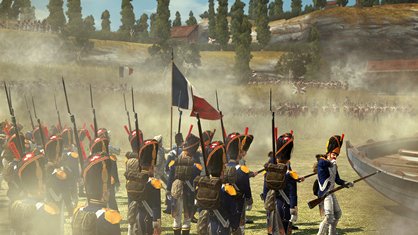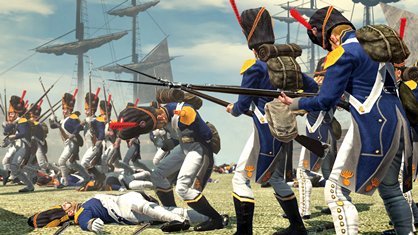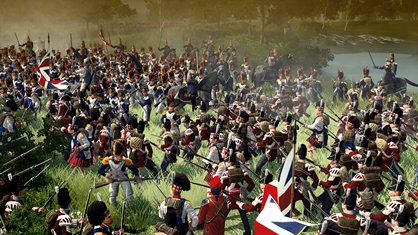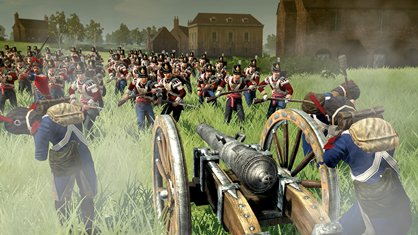Napoleon: Total War - hands on
Just how real is this historical war simulator?
Everyone knows all about the Total War series and its globe-spanning campaigns and battles, but one of the things lacking has been a real focus on the actual historical conflicts that took place. Often, a disappointing handful of token battles were cobbled together quickly to be played maybe once or twice and then discarded in favour of create-your-own scenarios.
The Alexander add-on for Rome: Total War bucked that trend, giving us a superb-yet-short set of narrative-linked battles plucked directly from history. From Issus through Gaugamela to Hydaspes, we were placed in Alexander’s sandals and given the task of succeeding where he had, er, succeeded. This is the expansion that Napoleon: Total War most closely resembles, except bigger and, hopefully, better.

The proof of a battle’s pudding is in the playing, of course. At Creative Assembly’s Horsham studios we got the chance to envelop ourselves in historical battle loveliness. The battles on display were Lodi and the Pyramids, the former played against the AI and the latter a head-to-head against the deputy editor of a games mag who shall remain nameless.
Map 1: Battle of Lodi
With Napoleon’s forces chasing the Austrian defenders up along the south bank of Po River, the time came to make a stand. When the battle was joined, as you can see, the French units are tightly bunched, while the Austrians are scattered about the place.

Each side have their own advantages: the French have the ability to move and fire as one big unit, concentrating fire on a smaller front and having strength in numbers, while the Austrians will be less vulnerable to cannon fire while they remain spread out.
The Austrian AI immediately set about strengthening its position in the centre of the town, moving units in from the west and reinforcing the eastern bank of the Po, over the Lodi Bridge itself. The objective for the French, other than killing a load of Austrians, is to prevent Feldzeugmeister Johann Beaulieu (the enemy general) from retiring from the battlefield. No mean task, as he’s safely tucked away on the other side of the bridge with, naturally, the bulk of his army protecting him. The French, as in me, need to move quickly and decisively in order to prevent this from happening. French cannons unlimber and begin to fire on the Austrian positions, while we make the decision to detach a small chunk of our army to intercept some of the Austrians moving to reinforce the town. Battle is joined on the western road and two Austrian cavalry units are driven from the field. The rest of the French force moves inexorably towards the town.
Sign up to the GamesRadar+ Newsletter
Weekly digests, tales from the communities you love, and more

The detachment that saw off the two Austrian cavalry units remains poised on the western side of the battlefield. The AI reacts to the danger and moves a substantial clump of men towards them. As the main bulk of the French army is now approaching the town, it is easy to reinforce the western position and battle is properly joined in the field outside of town. The French fight defensively, holding their positions while the two cavalry units harass the flanks of the Austrian infantry, causing them to panic. Sure enough, the Austrians have had it, dropping arms and pegging it back across the field. Half of the Austrian army is now running for the hills and we wheel our left flank around, partially encircling the town. Vicious street fighting begins and both armies whittle away at each other.
The Austrian commander decides it’s time to leave, but we won’t let the swine get away. As he meanders along the eastern path to safety, the cavalry, that have already secured our victory for me, ford the river to the north and intercept him. Mere seconds before he leaves the scene, they catch him, slaughtering his unit and claiming victory for the French.

The rest of the Austrian forces, stranded in the centre of town, fight on until a handful remain, their morale broken and, eventually, their bodies strewn around the town streets. A sound ‘defensive attack’ strategy won the day here, with the Australians unable to break Napoleon’s advance.


